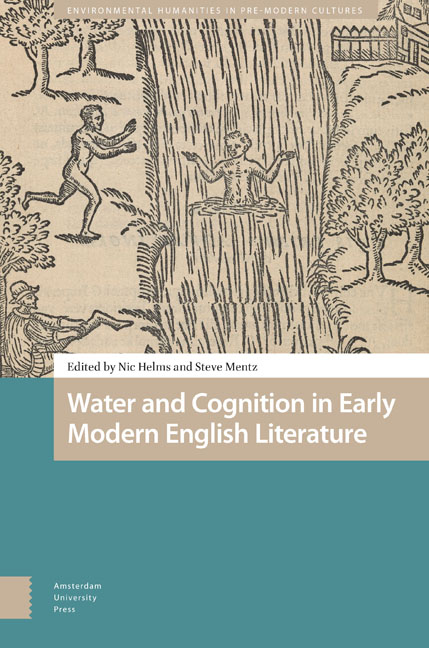Book contents
1 - Muddying the Waters: Thinking Thinking in Watery Context with Hamlet
Published online by Cambridge University Press: 16 April 2024
Summary
Abstract
Throughout Hamlet, watery figures act as metaphors for human cognition. Images of the sea and wind help audiences to think about how thinking works, or how thinking is failing to work correctly. While we can describe, categorize, and name metaphors through which we figure human thinking, cognitive critics point out that we cannot think thought itself because thought is only available to be thought through metaphors that are prelinguistic, embodied, and determined by what Mary Thomas Crane calls “prototypical categories” (16). Since the unconscious processes that create prototypical categories are contextual, setting Hamlet within our immediate present offers insight into our perilous ecological moment. By emphasizing cognitive criticism's insight into the production of meaning, this chapter examines how the current state of the world's waterways redounds onto Hamlet's watery metaphors.
Keywords: ecocriticism, distributed cognition, humoralism, climate change, disability studies, medical humanities
Watery figures act as metaphors for human cognition throughout Hamlet. For example, after observing Hamlet during the scene in her closet, Gertrude tells Claudius that her son is “Mad as the sea and wind when both contend / Which is the mightier” (4.1.7–8). The comparison captures the agitation that Gertrude just witnessed in her son, who oscillates between reason and passion throughout the previous scene. By telegraphing what she perceives as Hamlet's internal struggle as a storm, Gertrude diagnoses her son according to the standards of early modern humoral theory. The predominant theory of anatomy and physiology from classical antiquity to the rise of empirically controlled medicine in the nineteenth century, humoralism hypothesizes that a person's mental and physical well-being depends on the internal balance of the four humors, and that the four humors, blood, yellow bile, black bile, and phlegm, correspond to the four elements, air, fire, earth, and water. When read as an allegory of Hamlet's cognitive state, the sea of Gertrude's illustration stands for phlegm, or the bodily liquid most associated with both water and self-control or composure. The wind, with which the water in Gertrude's image of her son's madness struggles, represents blood, which is the bodily humor associated with air, and the qualities of not only optimism but also passion and wrath.
- Type
- Chapter
- Information
- Water and Cognition in Early Modern English Literature , pp. 31 - 46Publisher: Amsterdam University PressPrint publication year: 2024



